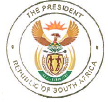PRESIDENT ZUMA TO OFFICIALLY LAUNCH GROOT MARICO HERITAGE SITE
2 October 2017
President Jacob Zuma will on Wednesday, O4 October 2017, officially open the Groot Marico Heritage Site and the Liberation Heritage Route of Bokone Bophirima, where activists crossed as they went into exile to continue the struggle against apartheid and colonialism.
In pictures and inscriptions, the Heritage Site tells the story of President Zuma and forty five (45) other activists who were intercepted by security police at Groot Marico in June 1963 leading to them serving prison terms on Robben Island.
The Groot Marico Heritage Site, featuring prominently the Arrest Site of President Zuma, is being developed as part of the liberation heritage programme of government, aimed at recording, preserving, restoring and promoting all heritage sites which form part of the rich liberation heritage and history of the country.
The site is envisaged as a tourist attraction with various features which have been designed in two phases. The first phase is comprised of a fireball surrounded by eight (8) walls, with each wall inscribed with various stories on the President's life. There will also be a museum furnished with art effects depicting the area of Groot Marico, North West and the liberation heritage stories as well as an old police van symbolising apartheid police and the Batswana cultural village which President Zuma will unveil.
The second phase of the Heritage Site is a house which is designed for use as a venue for small groups of people for meetings and events and would also have a craft centre.
The building and maintenance of the Heritage Site has a greater potential to stimulate economic activity and create much needed jobs in the communities of Groot Marico, Bahurutshe villages, Zeerust and surrounding areas in the North West province as well as contribute towards cultural tourism both domestically and internationally.
After receiving a train ticket from the ANC, President Zuma left Durban for Johannesburg on the 8th June 1963. On the 9th June, together with other young men, they left Johannesburg for Zeerust/ Lobatse border with the intent of crossing the border into exile in Botswana.
Aged 21 then, President Zuma and the other MK recruits were travelling in four different minibuses which were intercepted by police, leading to their arrest and detention in Zeerust and Groot Marico police stations.
After being sentenced to ten years in prison on 12 August 1963, all recruits were sent to Robben Island via Leeuwkop and Colesberg prisons. Handcuffed and placed on leg irons, they were subjected to harsh and inhumane treatment.
Upon his release from Robben Island in 1973 after 10 years in prison, President Zuma became instrumental in the underground MK and ANC structures in KwaZulu-Natal. He went into exile and underwent military training in the then Soviet Union, ending up heading the ANC’s Intelligence Department in the 80’s.
President Zuma became a trusted and key negotiator during the various talks between ANC and the apartheid regime. Upon his return from exile he led peace talks that ended the political violence in KwaZulu-Natal.
President Jacob Zuma was elected ANC President in 2007 and the fourth democratic President of the Republic in 2009 and was re-elected for a second term in 2014.
The Groot Marico Heritage and Arrest Site is dedicated to the liberation heritage struggle and to the contribution to the freedom of the oppressed in South Africa by the countless activists who crossed through the Zeerust/Lobatse border into exile.
The details of the event are as follows:
Date: Wednesday, 04 October 2017
Time: 10h00
Venue: Groot Marico, Ramotshere Moiloa Local Municipality, near Zeerust, North West Province
Statement issued by Dr Bongani Ngqulunga, The Presidency, 3 October 2017

